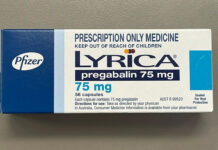Case scenario
Sarah, a regular customer in your community pharmacy, presents a prescription for riluzole tablets written by a neurologist for her husband David. It has been several months since David, aged 57, has been seen in the pharmacy. Sarah looks visibly upset and not her usual cheerful self.
After reading this article, pharmacists should be able to:
Competency standards (2016) addressed: 1.1, 1.4, 1.5, 2.2, 3.1, 3.5, 3.6 Accreditation number: CAP2410DMBW Accreditation expiry: 30/09/2027 |
Already read the CPD in the journal? Scroll to the bottom to SUBMIT ANSWERS.
Introduction
Motor neurone disease (MND) is a group of progressive, degenerative disorders of the motor neurones.1 Motor neurones are nerve cells which control the muscles that enable movement, speech, breathing and swallowing, and their degeneration results in muscle weakness and atrophy.1–3
Patients diagnosed with MND have an average survival time of 2.5 years after diagnosis and usually die of respiratory failure.1–3 The initial symptoms, rate and pattern of disease progression and survival times vary between p
THIS IS A CPD ARTICLE. YOU NEED TO BE A PSA MEMBER AND LOGGED IN TO READ MORE.



 Professor Margie Danchin[/caption]
Professor Margie Danchin[/caption]

 Dr Peter Tenni[/caption]
Dr Peter Tenni[/caption]
 How should we deprescribe gabapentinoids, according to the Maudsley Deprescribing Guidelines[/caption]
How should we deprescribe gabapentinoids, according to the Maudsley Deprescribing Guidelines[/caption]



 Pharmacists have always prescribed, but they have the potential to prescribe much more
Pharmacists have always prescribed, but they have the potential to prescribe much more







